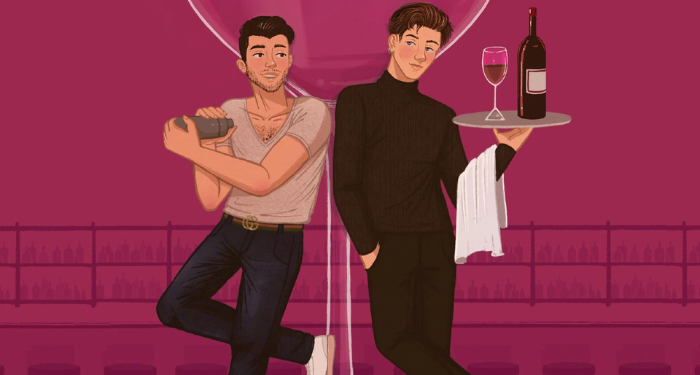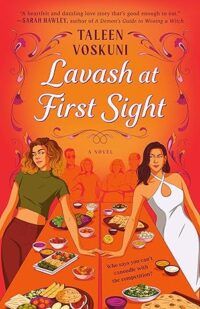We’re living in a queer romance renaissance, where love stories across the LGBTQIA+ spectrum are being published in never-before-seen numbers and finding new readers across the globe. According to The New York Times, LGBTQIA+ romance books experienced a 740 percent increase between 2016 and 2021. We’re also beginning to see more identities and lived experiences represented in queer romance, although there’s still much room for growth in diversity. Queer authors are changing perceptions of who deserves love and a happy ending, and they’re also shifting the vision of what that happy ending might look like.
As a queer romance author myself, I’ve been especially interested lately in how happily ever afters (or, as romance readers say, HEAs) might take unexpected shapes for LGBTQIA+ characters. I’ve found myself reenvisioning final chapters and epilogues in my books after thinking about how my characters’ dream lives might not fit genre expectations. After reflecting on this topic in my own writing and reading, I decided to reach out to seven queer romance authors to ask: What do you think makes for a queer happy ending? Is it different from a “traditional” straight romance happy ending? How do you approach writing HEAs for your characters? Their responses are wide-reaching and deeply insightful. I believe these authors and many others in the genre are shifting the vision for happily ever afters, not just for queer characters, but for everyone.
Meryl Wilsner on the Possibilities of Queer Happy Endings
Meryl Wilsner’s debut novel Something to Talk About was the first queer romance published by their popular romance imprint, and they’ve since also released Mistakes Were Made and Cleat Cute. When asked about HEAs in their books, Wilsner said, “The thing that makes for a queer happy ending is whatever queers want for themselves. Sometimes that looks the same as a traditional straight romance happy ending and sometimes it doesn’t.”
“I think queer people, by virtue of being queer, are forced to reckon with things society tells us to be true in a way allo cis het folks aren’t. Though that may begin as questioning sexuality or gender, it can permeate throughout our lives,” Wilsner shared. “There is never going to be one set way a happy ending should be written, because there are innumerable ways to be happy. What I want for my characters (and myself!) is to find the happiness that is right for them, to choose it for themselves, not because society tells them it’s what they should want.”
Timothy Janovsky on Queer Happy Endings Defying Expectations
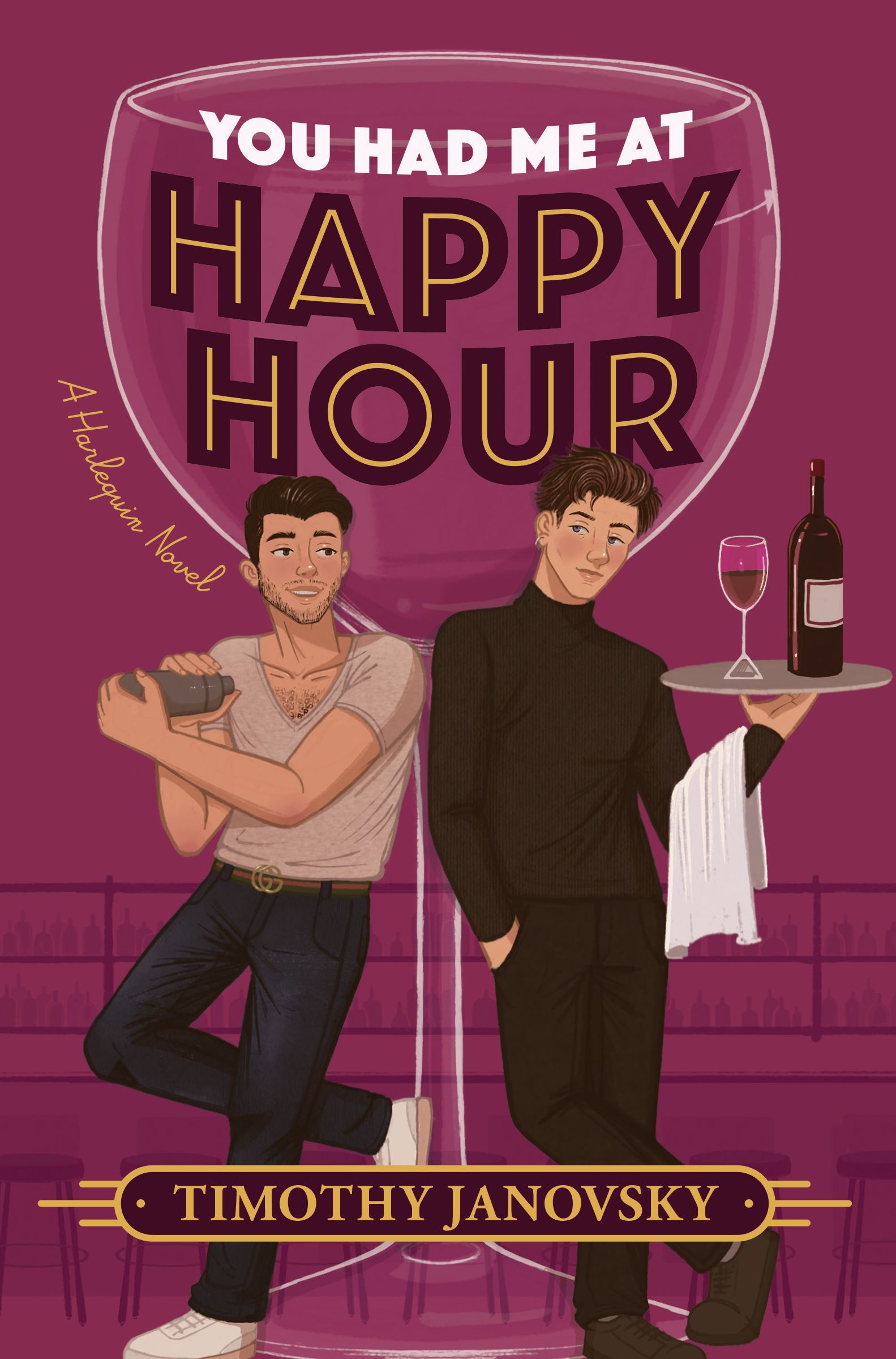
“I think a queer happy ending is inherently different from a ‘traditional’ straight romance happy ending because queer folk experience time a little differently than our peers, not just in the narrative space but in real life,” said Timothy Janovksy, author of five romances including Never Been Kissed, New Adult, and his most recent release You Had Me at Happy Hour. “Our firsts and coming-of-age moments don’t always happen in the same order, or at all, and the traditional ‘relationship escalator’ of meeting, dating, marriage, kids, etc. doesn’t always apply.”
Janovsky explained how contemporary queer experiences can shift our ideas of happy endings in fiction. “In a world where we have language and literature for different paradigms like domestic partnerships, open relationships, and polyamorous polycules, it’s hard to define ‘happy’ in any one way, as love is a limitless resource.”
When crafting a happy ending for his characters, Janovsky asks grounding questions like: What kind of intimacy do these characters crave, and what kind of relationship structure would they thrive in? “Sometimes that means long-distance, like my heroes in The (Fake) Dating Game. Sometimes that means being monogamous and moving in together like my heroes in You Had Me at Happy Hour,” he said. “I think because there are less expectations for assimilation, queer romance characters have a world of possibilities ahead of them.”
Dominic Lim on Coming Out in Queer Happy Endings
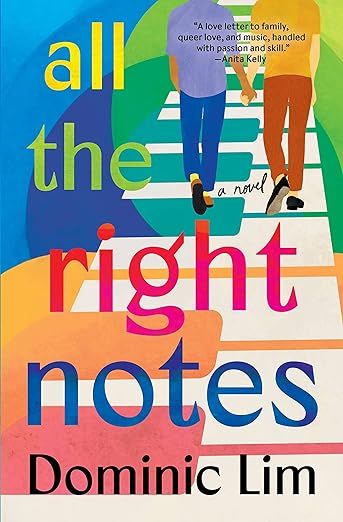
“It’s tempting to say that a queer happy ending should be equal to a straight one, but the truth is, LGBTQIA+ characters must take other things into account,” Dominic Lim, author of All the Right Notes and upcoming novel Karaoke Queen, said when asked about what sets queer happy endings apart. “Like acceptance by others and being out — not only to other people, but to themselves.”
Of course, coming out isn’t a requirement for a queer happy ending by any means, and it’s important to show queer characters feeling loved and valued regardless of their choices around coming out. But for Lim, it can also be a beautiful part of his characters’ journeys. “In All the Right Notes,” said Lim, “Quito Cruz and Emmett Aoki’s happy ending is only really possible when Emmett, a famous Hollywood actor, makes the decision to come out of the closet so that he can be with Quito fully and without having to hide who he really is.”
Taleen Voskuni on Family in Queer Happy Endings
LGBTQIA+ characters’ relationships with their families are another aspect of queer happy endings that may look different from what we traditionally see in romance. “In my books, my characters are Armenian, which complicates the queer aspect of the romance,” said Taleen Voskuni, author of Sorry, Bro and Lavash at First Sight. “Queerness is still not widely accepted in the general Armenian community, so I had to write books that address this reality.”
Some queer romances address complicated family dynamics through found family, while others give a character’s family of origin room to grow and learn. For Voskuni, it’s important to represent positive family relationships for queer Armenian protagonists. “A family that accepts their kid’s queerness with open arms, or a coming out that doesn’t rock the family dynamic is not the norm,” Voskuni shared. “Because my books are romances and not, say, literary fiction, part of the HEA is that all ends well with the main character’s family too. I needed the family relationship to have a happy ending as well as the romantic one. It wouldn’t feel like a pleasant comfort book without it.”
TJ Alexander on Trans and Polyamorous Happy Endings
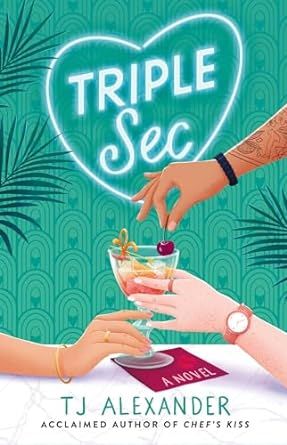
TJ Alexander, author of Chef’s Kiss, Chef’s Choice, Second Chances in New Port Stephens, and Triple Sec, four romances starring nonbinary and trans characters, doesn’t believe there are inherent differences between HEAs in “traditional” straight romances and queer ones.
“Everyone wants to be loved in the end. Everyone wants to be safe and happy and cherished. Those things are a constant, no matter what the characters’ sexuality or gender,” explained Alexander. “I think what queer HEAs do, though, is allow us to imagine the many different forms that happiness can take. Once upon a time, an HEA meant a monogamous commitment, marriage, children, all the nuclear family fantasies. And there’s nothing wrong with those fantasies, queer or straight, if that’s what serves the story. But our definitions of happiness, of what a ‘successful’ relationship looks like, can evolve, and I think queer romances especially are championing this right now.”
When writing Triple Sec, their new polyamorous romance with three protagonists, Alexander said, “I knew it wasn’t going to end in monogamy or marriage for obvious reasons. That HEA needed to be different, and I needed to figure out a satisfying ending that fit the characters and challenged some of those ideas. It needed to show commitment, care, and love in a new light. A romance doesn’t have to be queer to do this — but it sure helps. If your story is already set up to subvert some expectations, you may as well go all in.”
Claire Kann on Ace Happy Endings
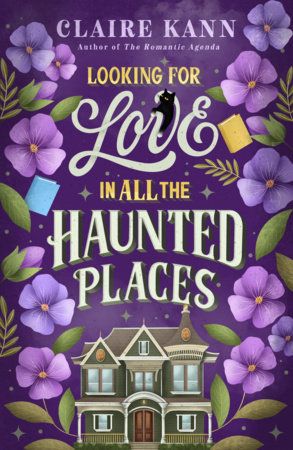
“I think queer HEAs have more flexibility in what that can potentially look like for the characters,” said Claire Kann, who has written a wide variety of books for different ages, including two adult romances starring asexual protagonists, The Romantic Agenda and Looking for Love in All the Haunted Places. “A lot of times, ‘The End’ is really the beginning. That’s part of the reason why I almost never write epilogues — marriage and babies don’t have to be the end game, but I’m very aware that is the genre expectation.”
When crafting happy endings for her ace protagonists, Kann said she looks beyond just romantic attraction, instead considering things like communication, problem-solving, politics, hopes and dreams, and other aspects of building a long-lasting relationship. Kann also noted that queer happy endings tend to involve more than just a romantic relationship between two characters. “I’ve noticed there’s a greater emphasis on including and maintaining friendships in queer romances,” she said. “Very rarely are platonic relationships dropped in the pursuit of romantic love. If anything, they’re baked into the journey. The protagonist will not make it to the end without their friends.”
Andie Burke on Dreaming of Queer Futures
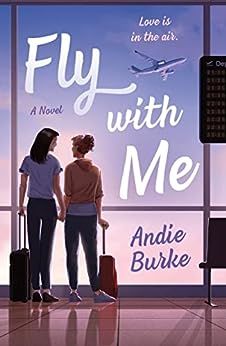
Andie Burke, author of Fly With Me and the forthcoming Fall for Him, acknowledges that queer happy endings are often a radical thing. “With an overarching media landscape favoring tragically buried gays or tortured coming-out drama, writing LGBTQIA+ stories with a final act of requited love and hope for the future feels almost subversive — even though it shouldn’t,” Burke shared.
“Most straight people will never have to spend weeks wondering if it’s safe to put a photo of their spouse on their desk at a new job. Because of this, I as a bisexual writer need my characters’ happily ever after to go beyond personal declarations of love,” said Burke. “I want my readers to see a future of beautiful acceptance in some way whether through their found family, affirming biological families, or a broader queer community.”
As a Jane Austen fan, Burke added, “Until the truth that LGBTQIA+ characters deserve happily ever afters is as universally acknowledged as a single man in possession of good fortune being in want of a wife, I will continue to infuse my book endings with as much radically queer love, joy, and acceptance as will fit on the page.”
Beyond Queer Happily Ever Afters
So are queer happy endings truly different from what we’ve come to expect in “traditional” straight romance? In truth, I believe it’s less about difference and more about expanding our understanding of what a good life can look like. There’s nothing wrong with wanting a monogamous, heteronormative marriage with children, but it’s not the only form a dream life can take. I believe, in writing a broad diversity of happy endings for LGBTQIA+ characters, queer romance authors are contributing to a broader conversation that asks readers to consider what it is the characters they read about — and, to take it further, they themselves — really want out of love and life.
Thank you to the generous and remarkably talented authors who shared their perspectives with me for this piece.
You might also enjoy:
15 of the Best LGBTQ Beach Reads of 2024
How Queer Authors Are Handling Pride Month in 2024
8 of the Best Queer Sports Romance Books
What do you think about queer HEAs in romance novels? Let’s chat in the comments!
If you found this post online and want queer book news and recommendations in your inbox, sign up for Our Queerest Shelves here.
The comments section is moderated according to our community guidelines. Please check them out so we can maintain a safe and supportive community of readers!
